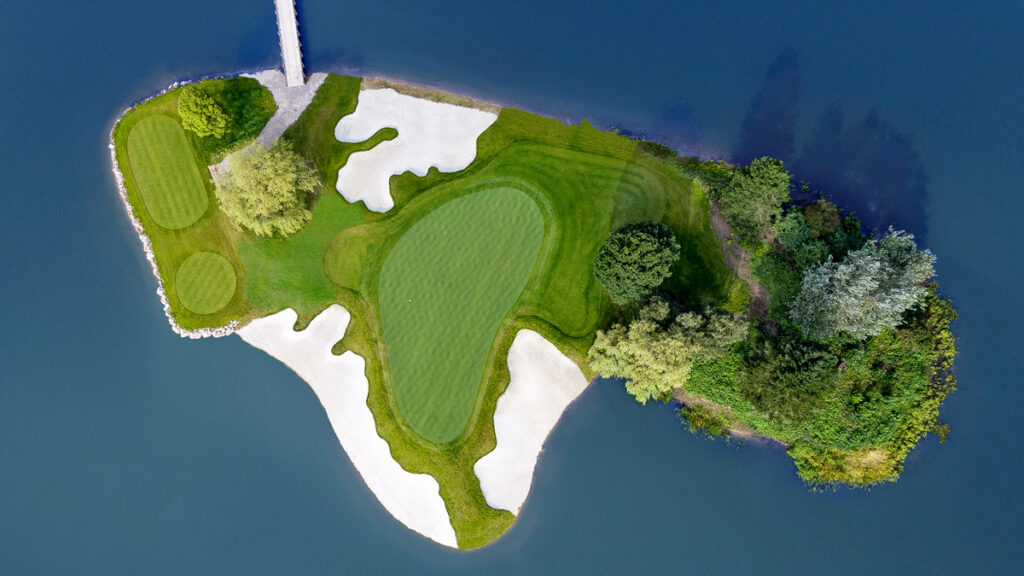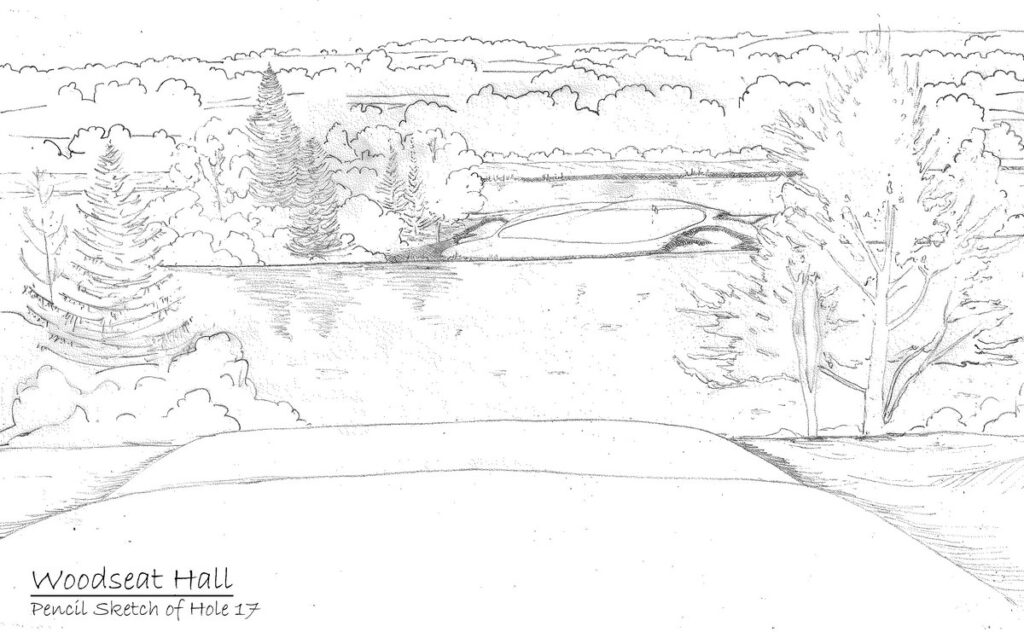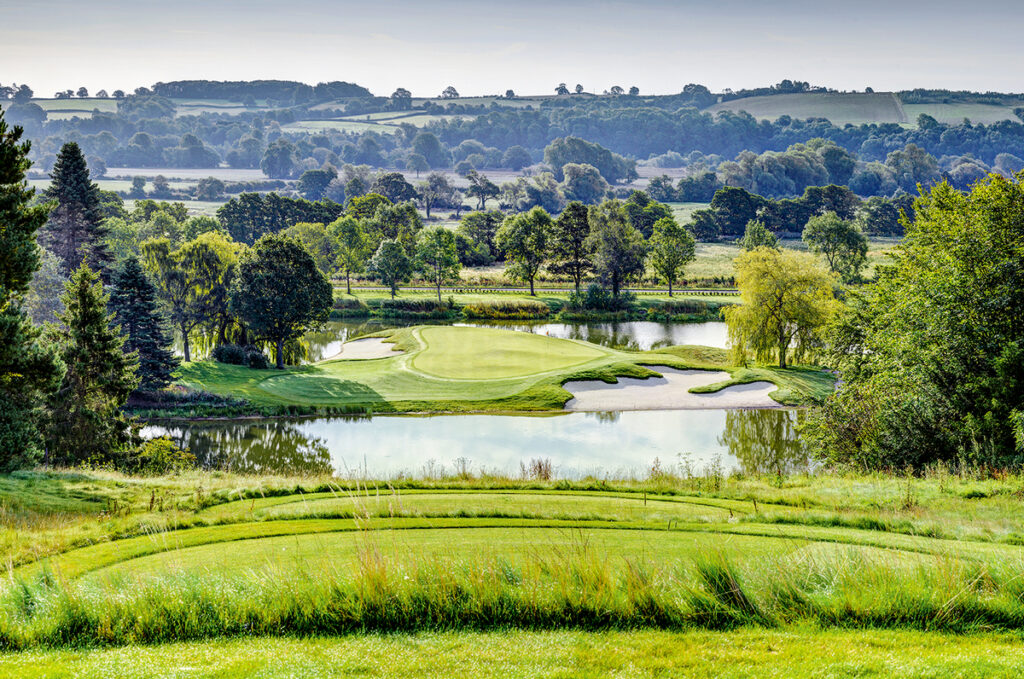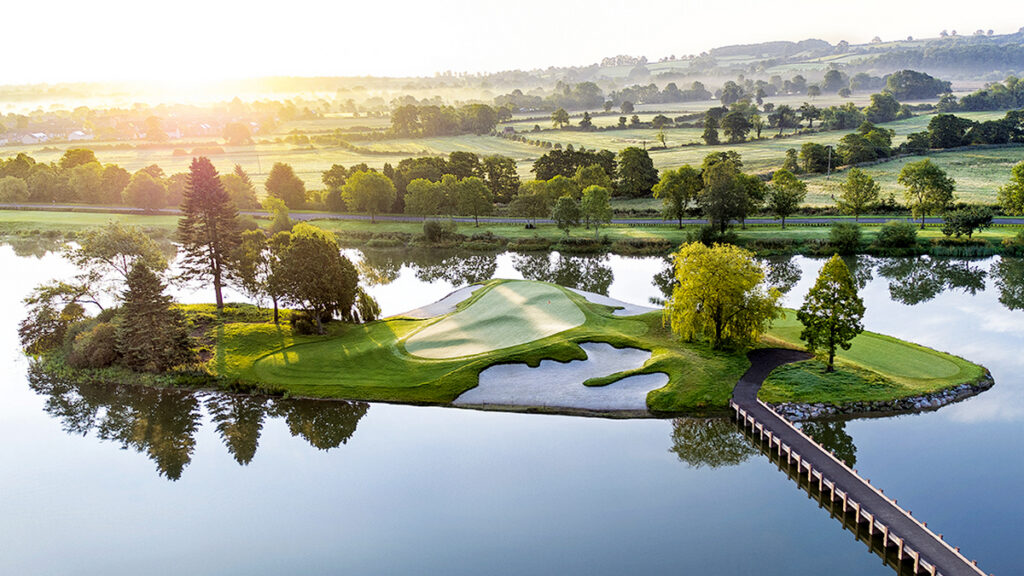17th hole / 255 to 116 Yards / Par-3
Architect: Robin Hiseman (2018)

Imitation is the sincerest form of flattery and golf architecture has seen numerous instances over the years in which hole types have been replicated. In some instances, the replicated version can be better than the original. The famed Redan 15th hole found at North Berwick / West in Scotland is rightly revered. However, the recreation by Charles Blair Macdonald at the 4th at the National Golf Links of America is often touted as being truer to its original concept.
The inclusion of water to overcome on par-3 holes has become a major component for many architects but there are few instances in which meaningful and lasting creations have been brought to life. The par-3 17th at TPC Sawgrass gained immediate fanfare — and some say notoriety — when Pete Dye created the diabolical island green. The hole plays under 140 yards but there’s no escape from having to clear water which engulfs the green on all sides. It helps matters that each year the Players Championship is contested there and the resulting thrills of success and cries of agony are always in full view.

Few courses that have opened in the last 25 years in the United Kingdom have registered such considerable attention as JCB Golf & Country Club. Opened in 2018 — the smartly crafted private club showcases the handiwork of architect Robin Hiseman and has rightly received numerous plaudits for the manner in which the varied holes cascade throughout the tumbling landscape.
The penultimate hole provides a range of emotions and is eagerly sought out to play as the round nears its climax.
Hiseman’s comments tell the story in full detail.
“The existence of the hole is a fluke. The lake wasn’t in the land area JCB designated for the golf course.
On my second site visit I glimpsed a bit of sunlit water through the trees alongside the proposed 18th hole and thought it would be nice to lift the canopy to give golfers a view of the fishing lake beyond. I popped over and found myself looking down on this wooded island in the middle of South Lake. The seed of an idea popped into my head that it was at just the right distance for a par 3. And that was that! There was a potentially iconic hole right there in front of me and I simply had to persuade Lord Bamford and JCB to give us the extra land to create it.

It’s at the distance limit for such a demanding tee shot. I didn’t want to disturb the natural shoreline of the island facing the golfer, so there is 70 meters of open water to be cleared. I thought it vital that it read visually as an island, with water clearly visible in front of, to the sides and behind the green. It sounds obvious, but few island greens actually look like islands. The tees are up to 90-feet above the green, so it plays significantly shorter than the yardage.
The green is one of the most distinctive I’ve ever designed. A spine ridge runs through the center of the green, separating the putting surface into four distinct zones. Two bowls on the right side gather balls towards the hole, but the long, narrow shelf to the higher left side of the ridge is much trickier to access. Some of the longer putts over the ridge are really perplexing. I opted for beach bunkers to mimic the natural sandy shoreline of the island. The most difficult factor is the wind. It really moves the ball in the air from that height.
There is an argument to say island greens are contrived, but 17 is a natural, found hole. The island had been there for over half a century, since JCB built the lake. It is just pure luck that it happened to be in exactly the right place for us to use as a golf hole. It’s the hole that every visiting golfer at JCB can’t wait to play.

It’s a thrilling tee shot and a special journey across the long bridge out to the little island. No matter the outcome, the experience will live long in the memory.”
***
For more info go to:
Photos courtesy: JCB Golf & Country Club
Schematic rendering: Clere Golf, courtesy of JCB G&CC